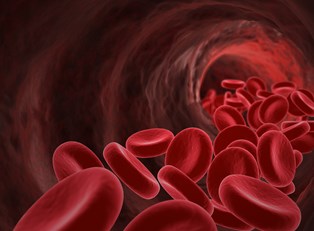As with any other life-threatening medical condition, a child's sickle cell anemia diagnosis can be overwhelming for a parent. Taking steps to understand this condition and how it will affect your son or daughter will likely alleviate some of your stress and lead to a more positive quality of life for your child.
Understanding Sickle Cell Anemia
Sickle cell anemia is a genetic blood disorder that causes chronically low numbers of red blood cells, the cells that circulate oxygen throughout the body. Because the body cannot survive without oxygen, the effects of sickle cell anemia can be life-threatening if not severe. There is no cure, and treatment focuses on both minimizing factors which exacerbate symptoms and managing crises when they occur.
Inheritability
Sickle cell anemia occurs when a child inherits two sickle genes, one from each parent. If you have sickle cell anemia or sickle cell trait and are planning for pregnancy, you may want to discuss tests to determine whether your partner is also a carrier of the sickle gene. Sickle cell anemia may be detected during pregnancy by testing amniotic fluid, although most screening happens at birth.
Newborns
Newborns are screened for sickle cell anemia in almost every state. If you live in a state that does not screen and you or your partner has sickle cell anemia or sickle cell trait, you may want to request the test. Symptoms are not present at birth and usually show up after three to four months of life. A positive screen for your child doesn't necessarily warrant parental panic. Many children with sickle cell anemia enjoy active and healthy lives into adulthood, but it will require your learning about the disease and diligently working with your child’s physicians to prevent life-threatening complications.
Childhood
Children with sickle cell anemia will need to visit the doctor more regularly than others. Your pediatrician will likely refer your child to a pediatric hematologist, a physician who has extensive knowledge about blood diseases in children. When symptoms flare, you may visit the ER or a sickle cell clinic for any of these commonly occurring medical emergencies: fever, anemia, stroke, pain crisis or swelling of the extremities (usually the hands and feet), acute chest syndrome or chest pain, priapism (painful long-lasting erection of the penis), splenic sequestration or swelling of the belly, or jaundice (yellowish discoloration of the skin).
Aside from emergencies, your child’s growth should be monitored carefully, because undernourishment can be an issue. Preventing infections is critical to your child’s survival, so your child may need to take penicillin daily until he or she is 5 years old. Receiving vaccinations on schedule, including yearly flu shots, is vital. Regular ultrasounds of your child’s brain may help detect a need for blood transfusions and prevent a possible stroke. Supplements of folic acid may also be taken daily. Hand washing is essential to prevention.
You can help to avoid factors that trigger a pain crisis can by dressing your child appropriately for the weather. Children can and should enjoy physical exercise as long as they do not overexert themselves. Dehydration should be a concern, especially in the heat or during play. Youngsters with sickle cell anemia are more susceptible to harmful bacteria such as salmonella, so foods should be cooked thoroughly; these kids should also avoid contact with salmonella by refraining from touching reptiles.
The uncertainty of life and chronic pain can deal a blow to the psyche, so learning to talk to your child about sickle cell anemia and helping him or her voice fears and feelings is important. Many websites present information about the disease in a kid-friendly way so kids can learn about it and how to prevent symptoms. Referring to a Wong-Baker Pain Rating Scale or other pain scale may help your child communicate their pain levels.
Puberty and Adolescence
In addition to other common symptoms, the effects of chronic illness caused by sickle cell anemia may result in some degree of organ damage by this time. Your teenager may undergo hip surgery, a gallbladder operation, or laser eye treatment as a result. Skin ulcers and painful erections are other concerns.
Sickle cell anemia can hinder growth, causing your teenager to have a smaller stature than others. Furthermore, puberty is often delayed in youths with sickle cell anemia for two to three years. Many teenagers struggle with body image during this transitional period, but your teenager may struggle more so. Providing emotional support is critical during this fragile time. Research has shown that long-term care for a chronically ill dependent can cause its own health issues, so finding a support group for you and your child may be a good idea.



